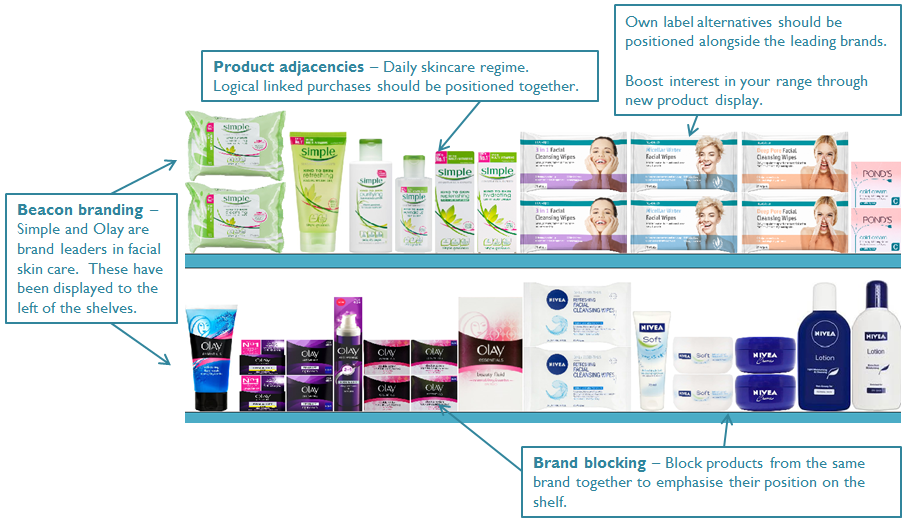Core merchandising principles
In Retail & merchandising
Follow this topic
Bookmark
Record learning outcomes
Enhancing your categories using core merchandising principles
Effective merchandising is a key factor in successfully managing categories. Shoppers only spend a short amount of time browsing for products at a fixture, even less if they're poorly, which emphasises the importance of getting your shelf arrangement absolutely perfect. The following techniques help your customers find products they want and maximise sales through clear product display.
Product adjacencies
If a customer needs shampoo, they are likely to need conditioner too and maybe even some hairspray. It is important that these products are found next to or near to each other in the shop. This is the way adjacencies work.
A simple adjustment to the way you display products can really help to boost your sales by encouraging customers to make linked purchases. Throw in some multi-buy promotions and you have the necessary tools to draw customers in and increase sales.
Product adjacencies also help build regime into your planograms, discretely encouraging customers to increase their basket spend. When merchandising, think of a common daily process from the customers' perspective and the order in which they would complete this task. If you take a daily skincare regime, the process would look like this:
Face wipes → Eye makeup remover → Cleanser → Toner → Serum → Day/night moisturiser.
Merchandise in this order and you have provided your customers with a great range of products to cover their entire routine. Without displaying these products together, customers won't necessarily make the link and are more likely to only buy a single product.
Beacon branding
 When searching for a specific category, customers will primarily search for branded products that they recognise irrespective of whether that is the brand they want to buy. For example, a customer looking for toothpaste will search for Colgate.
When searching for a specific category, customers will primarily search for branded products that they recognise irrespective of whether that is the brand they want to buy. For example, a customer looking for toothpaste will search for Colgate.
Beacon brands are almost always the brand leaders in the category and the best known amongst consumers. Customers will scan a shelf in the same way they would read a book, left to right. This means that to help the customer navigate, beacon brands should be positioned to the left of your shelves and positioned at eye level. Eye level is usually around the fifth or sixth shelf from the bottom. You should always begin a new subcategory with the beacon brand, to let the customer know where one subcategory has finished and another begins.
The same technique also works for subcategories; the most prominent subcategory should be positioned at eye level on your fixture to help customers locate the products they are searching for. If we take the gastrointestinal (GI) category as an example, heartburn and indigestion dominates the category, so this should be positioned accordingly with Gaviscon as the beacon brand.
Brand blocking
When merchandising, brands are usually grouped together creating a uniform look, preventing your shelves from looking scattered. There are a number of advantages to brand blocking, which include:
- Simplified shelf navigation.
- Creating a more attractive look.
- Encouraging multiple purchases from a single brand.
- Reduced customer confusion when browsing the fixture.
Brand blocking is a proven merchandising technique that improves the look of your shelves and boosts customer satisfaction through simple navigation and a hassle free, time saving shopping experience.
Successful merchandising is about working in-line with customers' buying habits. The thought processes that help customers choose between different products and brands drive the basic merchandising principles.
Customers' motivation and decision making processes differ depending on the product type they are searching for. Some require more brand loyalty whilst others are price focussed. Some purchases are determined through core ingredient/brand/size and others through format. For example:
Brand: Nurofen, Cuprofen.
Ingredient: ibuprofen, paracetamol.
Size: 12, 24, 48.
Format: soluble, tablet, caplet.

If you would like further advice or information about core merchandising principles, please contact the Numark Marketing department on 0800 783 5709*.
Further information on Retail Therapy is available on NumarkNet.
